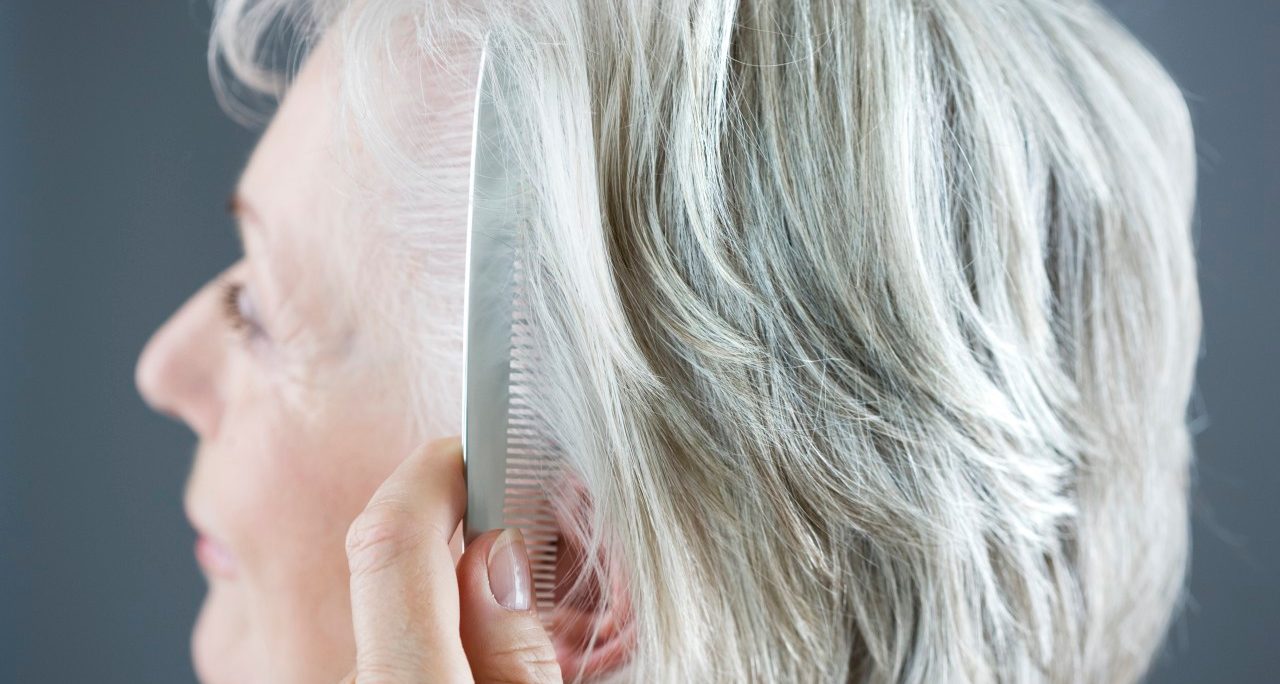Can Women Control Hair Loss?

Age can make women have thin hair on their scalps and receding hair at their temples. But you have several options. Here’s what you can do.
You might not like to think about it, but women lose hair, too.
If you see clumps of hair in your brush or shower every day, it’s worth seeing a dermatologist or your primary care doctor.
YOU MIGHT ALSO LIKE: What You Need to Know About Hair Loss
A doctor will:
- Review your health history, including your medications
- Diagnose non-scarring or scarring hair loss
- Possibly complete blood work to check your vitamin D and iron levels
- Analyze your diet for deficiencies
- Check your scalp health and try to eliminate inflammation
- Check hair follicles and anchoring of your hair
Hair loss in women
The most common type of hair loss in women, female pattern hair loss, can begin as early as your 30s. About 40 percent of women have the problem by age 69 and more than half by 79, research suggests.
If your hair is thinning on the top of your scalp — a center hair part will look wider — you most likely have the age-related condition, also known as androgenetic alopecia. Your hair might also recede at your temples.
With androgenetic alopecia, your hair follicles become smaller “and produce shorter, thinner, more brittle hairs, and can eventually stop producing any hair,” explains said David J. Wong, MD, clinical associate professor of dermatology at Stanford University.
You can also end up with fewer follicles.
Both men and women can feel less attractive when they lose hair, but the condition isn’t otherwise serious.
"You don't need hair to keep you either warm or cool, so its primary function is to increase attractiveness," London trichologist Philip Kingsley said.
Although female pattern hair loss tends to be hereditary, certain medical conditions, some drugs, poor diet, and hair treatments can be triggers. Hormonal changes from pregnancy, childbirth, or birth control pills can stimulate an episode of shedding.
Treatment works best if you start soon after hair loss begins.
Medications for hair loss in women
The Food and Drug Administration (FDA) has approved only one drug, minoxidil, for women with androgenetic alopecia. (Two new drugs for hair loss have been approved, but for people with an autoimmune disorder called alopecia areata).
Minoxidil stimulates hair follicles topically. It began as a treatment for high blood pressure, but people noticed they were growing hair in places where it had disappeared.
You have a choice of a 2 percent solution twice a day or 5 percent once day, both of which seem to be equally effective. If the medication helps, you can expect moderate hair regrowth after two months that improves by month four. You’ll have to continue applications to maintain the benefits.
Topical minoxidil may work best combined with an oral medication or with low-level light therapy, or both. You can try adding the anti-androgen drug spironolactone, especially if you have polycystic ovary syndrome (which gives you excess androgens, hormones that play a role in reproductive health and body development).
It is also possible to take minoxidil orally. It is usually well-tolerated at very low doses of .25 to 1.25 mg daily.
Some women benefit from a 2 percent anti-fungal (Nizoral ketoconazole) shampoo that treats dandruff, which may tame inflammation of your scalp.
Another option is to apply a solution with melatonin to your scalp.
Beyond low-dose minoxidil and spironolactone, you can talk to your doctor about other oral medications.
Low-androgen birth control pills are also an option.
The drug finasteride for men hasn’t been approved for women. It is not safe for pregnant or breastfeeding women, but it may help postmenopausal women, especially along with topical minoxidil.
The drug dutasteride, which can help men with enlarged prostate glands, may also help women, but it has not been approved for hair loss.
Office procedures for hair loss in women
With micro-needling, a relatively new treatment, a dermatologist punctures your skin to induce a wound-healing response that may include new hair growth. You’ll sometimes also receive topical minoxidil, or a steroid. The combination seems to work best.
Plastic surgeons have experience removing fat from one part of your body and putting it elsewhere. It turns out that injecting fat into a woman's scalp can help hair loss.
Hair transplant surgeons have injected platelet-rich plasma into the scalps of women.
At-home treatment for hair loss
At home, you can try several low-level light therapies, delivered through a comb, hood, or helmet. Small studies back them up.
The FDA has approved the Hair Max Laser Comb for both men and women. About half of a handful of women saw improvement in one study after using the device for 10 minutes every other day for six months.
If you opt for the treatment, try it with topical minoxidil as well.
Finally, some people benefit from taking iron and other supplements, but that makes the most sense if you have an iron deficiency.
Updated:
August 31, 2023
Reviewed By:
Janet O’Dell, RN